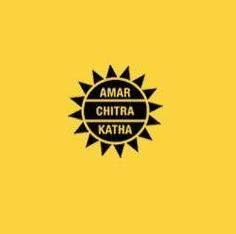We asked mythologist and leadership consultant, Devdutt Pattanaik, to evaluate the effectiveness of the storytelling approach used in graphic media such as Amar Chitra Katha. Here is what he had to say:
On the influence of audience and pop culture
The circumstances under which Amar Chitra Katha penetrated Indian homes were different from those that prevail today. There was a limited range of graphic novels and comic books to choose from and the channels through which stories reached children and were made visually accessible were clearly different thirty years ago. Today, we are more visually educated as an audience thanks to television, the internet, movies and a whole barrage of graphic novels. A visually educated population is likely to respond very differently from a visually uneducated population.
ACK was strongly influenced by calendar art but it overlooked traditional miniature and cloth painting styles of India as sources of inspiration. It also propagated some stereotypes in character depiction: dark skin tones were used for demons, lighter tones for gods and heroes. The women and men had model-like body frames as the artists used images of film stars from magazines as their templates for sketching. So while it worked then, it may not work now or for much longer, as the target audience is growing in sophistication.
With the internet closing the global cultural divide, children in India are now exposed to images from Japan (Anime) and the US (Disney, video games, Hollywood). However, the characters often reflect Western ideals of physical perfection. The men are muscular and built like Greek heroes; the women look like ramp models, or erotic stars. There is a big visual gap between such depiction and the emotions associated with Hindu gods and goddesses. Many have tried to Hollywood-ise Indian characters but they lack the emotional range (or ‘bhaav’, as it is termed in Hindi) of indigenous characters and are not versatile enough for different kinds of stories.
On the desired visual direction for ACK
We are always looking for ways to bridge the gap between what we want to communicate and what the reader is ready to receive. In this respect, having a designer or visualizer who is in tune with this need can be very helpful. However, all too often, designers and artists are poorly educated about what needs to be communicated. For example, a graphic artist once visualised Kabir – a poor weaver poet from Varanasi – as a veritable Iron Man, with a six-pack to match. Clearly ignorant about Kabir and his personal circumstances, the artist was trying to force-fit a poet-saint into a superhero template because he sees the latter as being popular.
On the impact of messages and emotions
If stories are delivered with a strong agenda, they become propaganda. Nobody likes to be manipulated and so one must be careful about how these are woven into the story. Stories are memorable not when they teach something but when they strike an emotional chord with the reader. The emotional connection can be established using the story, the medium, or both. The underlying and most critical ingredients are the ‘rasa’ and ‘bhava’ (sensory and emotional responses) evoked by the stimulus we offer.
On the takeaway for brand communicators
Brands are all about feelings. Brand communicators have to ask themselves: does the visual evoke feelings that I would like to see associated with my brand, without getting into the territory of propaganda? If yes, then we are on the right path.
Devdutt Pattanaik is an author, mythologist, and leadership consultant whose work focuses on deriving management insights from mythology to uncover an Indian approach to modern business.




